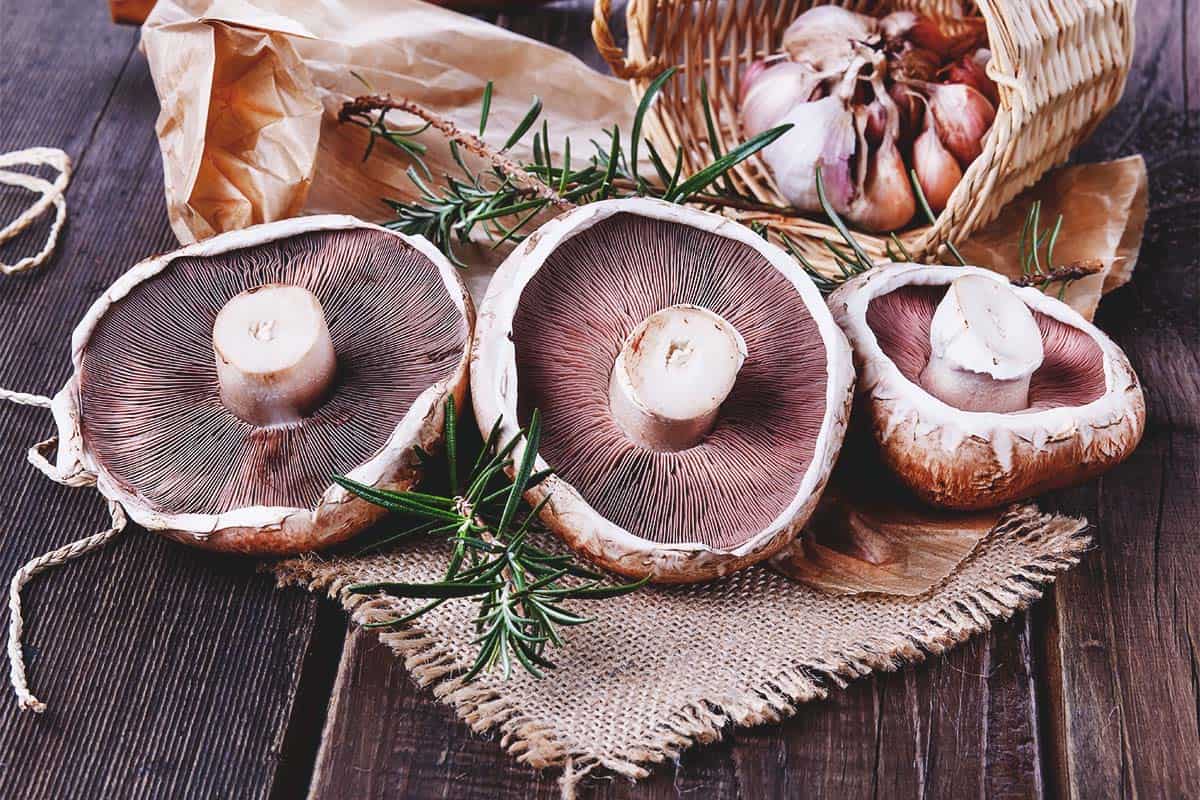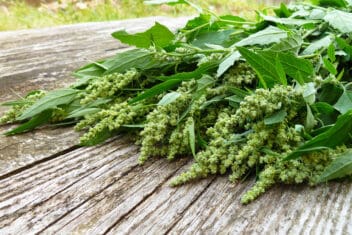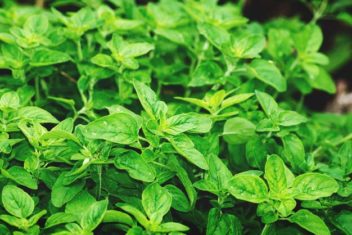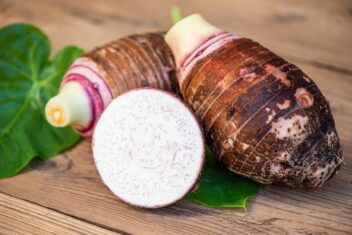One of my favorite meals that my husband cooks is stuffed portobello mushrooms filled with cheese, spinach, onions, and tomatoes. It’s beyond delicious, and my love of this dish encouraged me to learn about growing portobello mushrooms at home.
Growing any type of mushroom seems intimidating at first. They don’t grow like a typical vegetable in your garden beds, but the process truly isn’t any harder than raising tomatoes or onions.
There are two ways to grow portobello mushrooms and we’re going to cover everything you need to know.
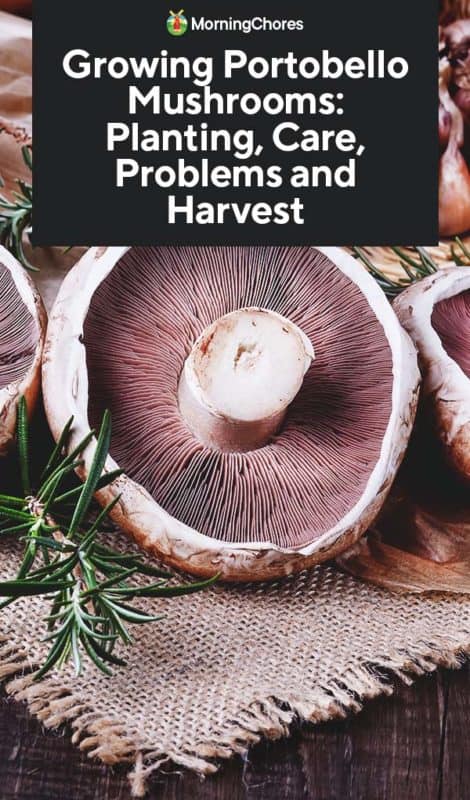
What Are Portobello Mushrooms?
Most people are familiar with portobello mushrooms. Sometimes, they’re called portabella mushrooms, but they’re the same thing.
Portobello mushrooms originated in Europe and North America, but now they’re cultivated in over 70 countries. They’re popular for chefs and home cooks all over the world.
They’re easy to identify because they have large, brown, circular caps with almost black gills underneath. It’s hard not to love them with their meaty flesh.
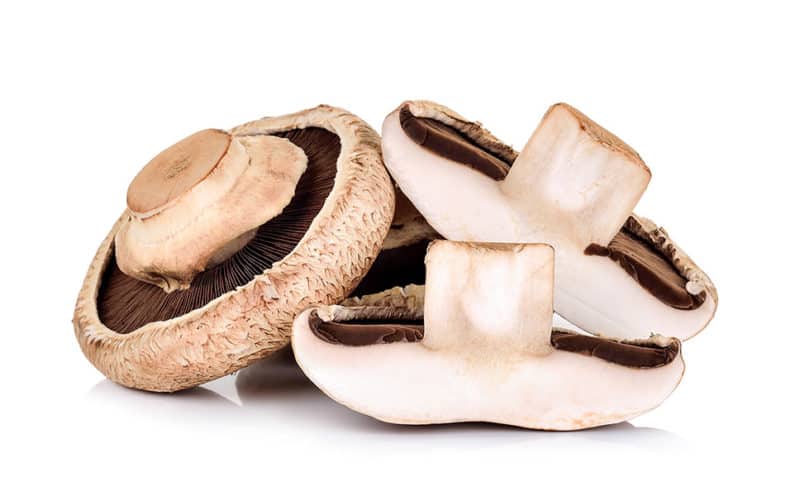
You can do so much with these mushrooms, from making burgers to grilling them as a meat substitute.
The Two Methods of Growing Portobello Mushrooms
Growing mushrooms is a lot different than growing other plants. You don’t grow it out in your typical garden beds and it doesn’t need much sunlight. Since you often grow mushrooms inside, dealing with pests and diseases is rare.
You can either grow portobello mushrooms from a growing kit that you buy or you can create a planting bed and put spores in it.
Ready to get started?
Planting With a Growing Kit
You can buy a growing kit if the whole process makes you a bit nervous. A kit comes with everything you need to grow portobellos. It takes little effort on your part.
With growing kits, you essentially need to open the box and mist regularly, storing the kit in a cool dark area until the mushrooms sprout and grow.
Yes, it’s easy, but kits are small, so if you want to grow a lot of mushrooms, it’s not practical to buy kits. They’re expensive since you grow a limited number of mushrooms. For the same price, you can put all the materials together and grow triple the amount.
It just takes a little more knowledge, which we’ll give you below.
Planting With Spores
You don’t use seeds to get mushrooms. Instead, you need spores. If you don’t go with a growing kit, then growing portobello mushrooms from spores is your second choice.
Spores are how mushrooms get started growing. It takes time to learn how to grow mushrooms this way, but it can be an excellent experience.
The Right Planting Medium
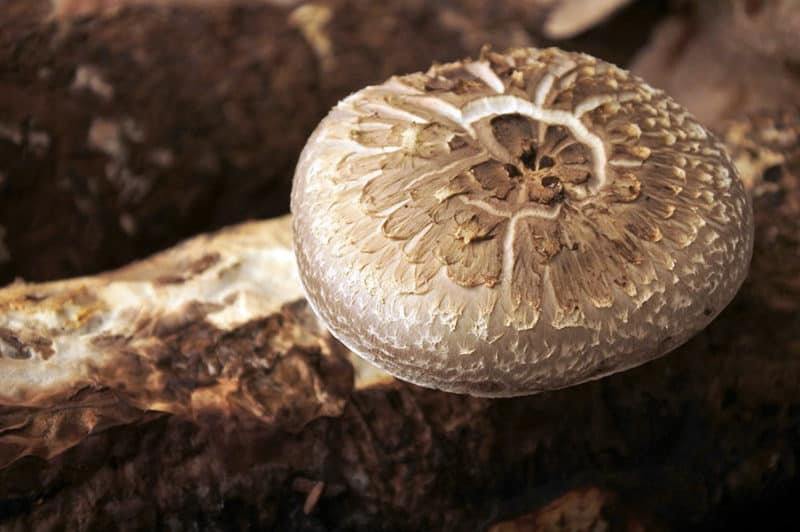
One of the biggest differences between growing portobello mushrooms and any other vegetable is that you don’t use typical soil.
You need manure-based compost along with soil and peat moss. If your planting bed is 8 inches deep, then you need to fill it with around 6 inches of compost. The rest of the space will be soil and peat moss added later.
Where to Grow Portobello Mushrooms
You can grow portobello mushrooms indoors and outdoors, but there are special considerations for both.
If you decide to grow mushrooms outside, the daytime temperatures should not go above 70°F and the night temperatures shouldn’t go below 50°F. That leaves a small window of time depending on your location.
If the temperatures get above or below these temperatures, you’ll need to move the spores to a different location. Having shade from trees or being close to a river can help get the temperature right.
Growing them inside gives you the option to grow mushrooms year-round. You need a dark, cool location that stays between 65-70°F. A basement might work well.
Create a Planting Bed
The first step is to make a planting bed to grow the mushrooms. If you’ve done any home improvement projects, making a bed will be easy.
Outdoors, the planting bed should be built out of lumber, and it needs to be around 8 inches deep and however long you want, but at least 6 inches long.
Indoors, you can use a tray or a shallow plastic storage tub. It should be about 8-inches deep.
Sterilize The Growing Medium
Once your bed is built and you have the planting medium, you need to sterilize it. You can do that by putting cardboard over the compost and covering the cardboard with a single layer of black sheeting. Keep it tight so that it doesn’t blow away in the wind.
Leave the plastic covering in place for two weeks in a sunny place. Doing so heats up the compost, getting rid of bacteria that might damage your mushrooms.
If you’re growing indoors, you don’t need to sterilize unless you want to do so. It can encourage healthier growth. To sterilize indoors, put the growing medium in the oven and bake it for 30 at 200°F until it reaches 180°F.
Insert the Spores
Now, you’ll take the mushroom spores you bought either online or at a gardening store. Wearing rubber gloves, sprinkle 1-inch of the spores onto the compost and use your hand to gently mix them into the dirt about 1-inch deep. Pat and press the compost down once mixed together.
Cover the compost with 1-inch of peat moss and a single layer of newspaper over that. Use a spray bottle to mist the newspaper, getting it totally moist but not soggy wet.
Caring for Portobello Mushrooms
When it comes to growing mushrooms of any type, the hardest part is setting up the growing environment and getting started. Taking care of the mushrooms and waiting for them to mature is the easiest part.
Water the Mushrooms
Mist the newspaper at least once a day with your spray bottle to keep it moist. If the paper dries out at any point, spray it again. This increases the humidity in the planting medium.
Mushrooms need a damp, humid environment, ideally between 65-80%. That’s why they grow so well on the floor of forests. Be sure to use a spray bottle to avoid flooding the growing bed with too much water.
Make sure you use distilled or purified water. Chlorinated water is not good for mushrooms.
Pests that Bother Mushrooms
For the most part, few pests bother mushrooms, especially since most people grow mushrooms inside. However, mushrooms, in general, are bothered by flies, also known as fungus gnats.
Your first line of defense is to discourage flies from entering the space where you’re growing mushrooms. Block doorways and windows with screens. You can also use light traps in the room.
Encourage entomopathogenic nematodes to control the flies that attack mushrooms.
If that fails, you can work diflubenzurone into the substrate when planting. After that, use smoke pellets to control flies.
Cecid Larvae
The adults don’t attack mushrooms necessarily, but cecid larvae like to munch on the stems and gills of the mushrooms and can reduce yield.
Phorid Fly
These look like creamy-white maggots and they feed on your mushrooms in the early stages. When they transition into a fly, they can transmit diseases.
Sciarid Fly
These are some of the hardest flies to kick. Once they reach the adult stages, they’re most evident around light sources with their black bodies and gray wings.
Harvesting Portobello Mushrooms
After 2 weeks, it’s time to remove the newspaper and check on the mushrooms growing in the planting bed. You’ll find small, white heads popping out from under the peat moss.
If you don’t find white heads or only see streaks in the soil, keep the newspaper in place and check again in a week.
If you do find white mushroom heads, it’s time to take off the newspaper. Continue to mist the mushroom, encouraging more growth. Do so once a day for 10 days.
After 10 days, your mushrooms should be ready for harvesting. The caps should be around 2-3 inches in diameter, but you can let them get bigger. You also can harvest them sooner, but then you’d be eating criminis, not portobello mushrooms.
Harvest right before the edges of the caps turn flat rather than curled under like a typical mushroom. All you have to do is dig the mushrooms out of the compost with your hand.
Make sure you keep misting the compost with water. Once you harvest all of the mushrooms, cover the tray with a new newspaper and keep misting. Typically, you can get 2-3 batches from each planting.
Storing Portobello Mushrooms
Once your mushrooms are harvested, clean them off with a paper towel. Then, once cleaned, store them in a brown paper bag in the refrigerator.
Cooking Ideas
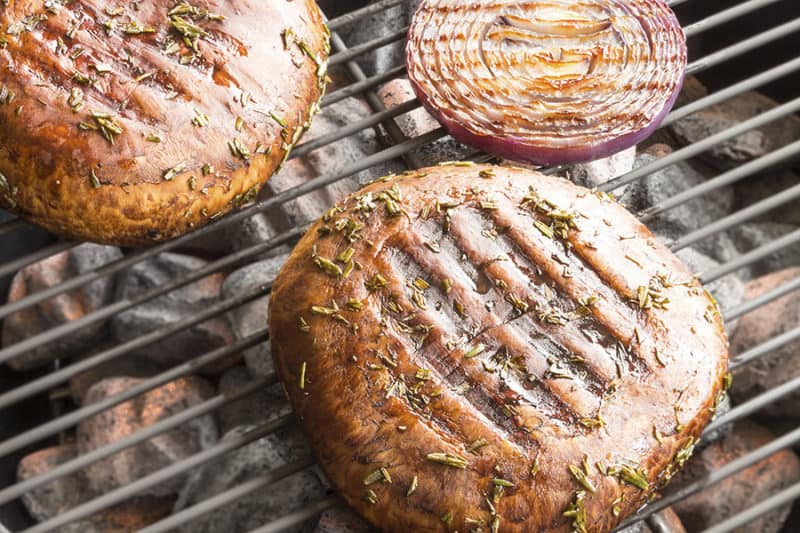
Of course, you can always grill portobello mushrooms like you would a steak. You can also stuff them with cheese, herbs, and veggies and bake them in the oven.
Don’t have to stop there, though. You can make scalloped mushrooms, or use them as a replacement for a burger. Slice them thin and use them as a base for pasta sauce and parmesan cheese.
Whatever you do, the key is to cook them slowly in oil to burn out the moisture. Try cooking them covered in a pan on low heat for 2 hours – the flavor is a revelation.
Portabello Mushrooms Don’t Have to Be Intimidating
If you thought growing portobello mushrooms was hard, now you know that you’re wrong!
Once you have the sterilized potting medium and a growing bed, all you need to do is add some spores to the medium and within one month, you’ll have a bountiful harvest with more on the way.
Once you get good at growing portobello mushrooms, you may even want to start doing it to earn some money. Mushrooms are a profitable business. Our guide will show you how.
